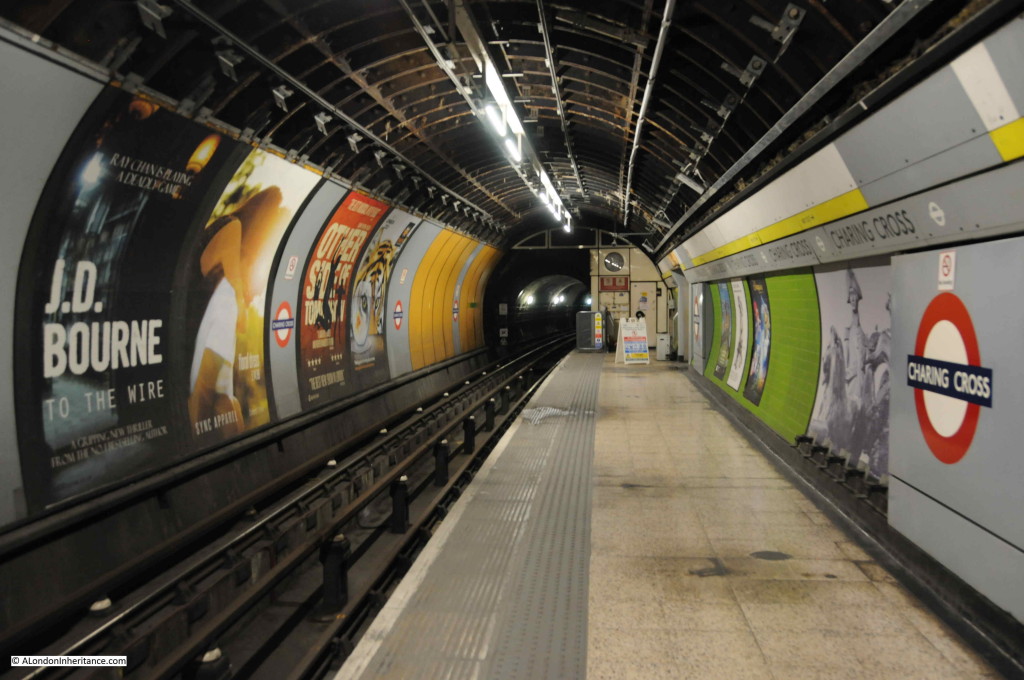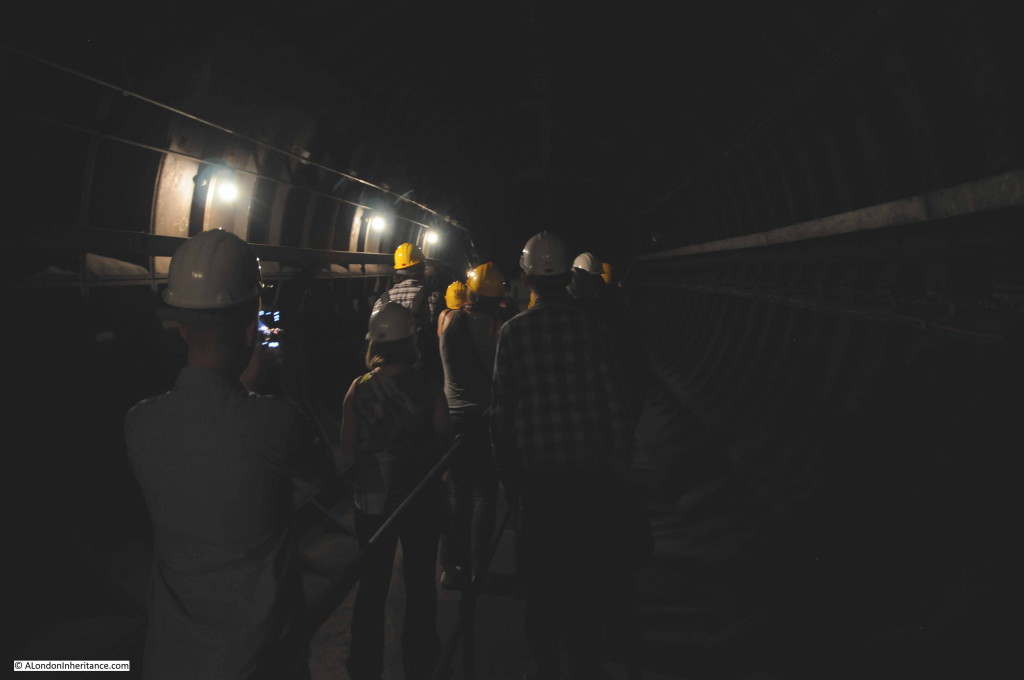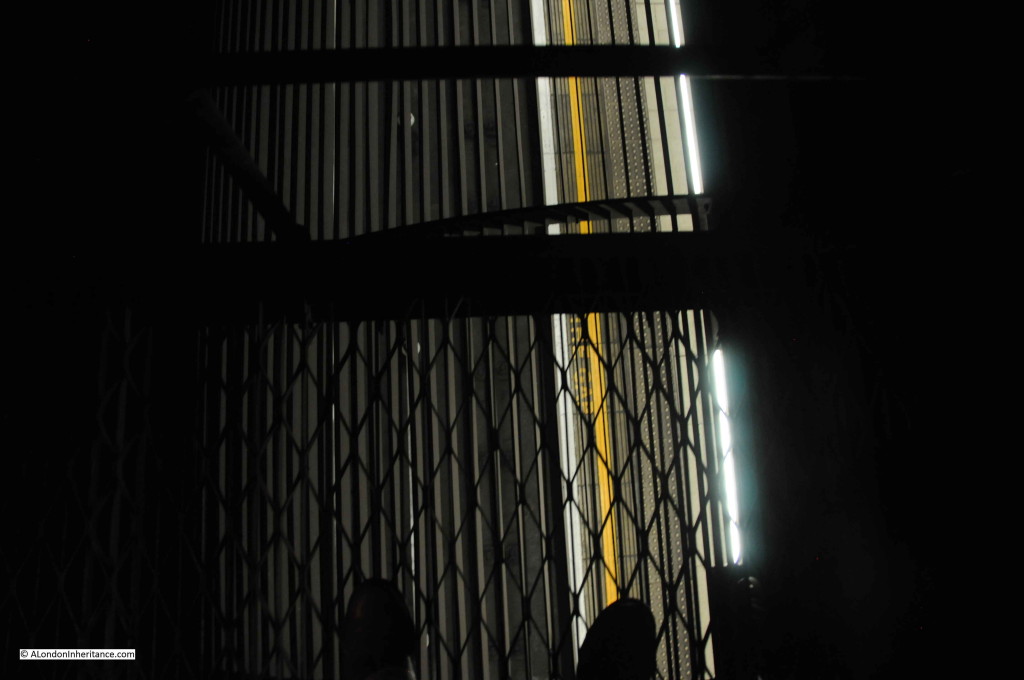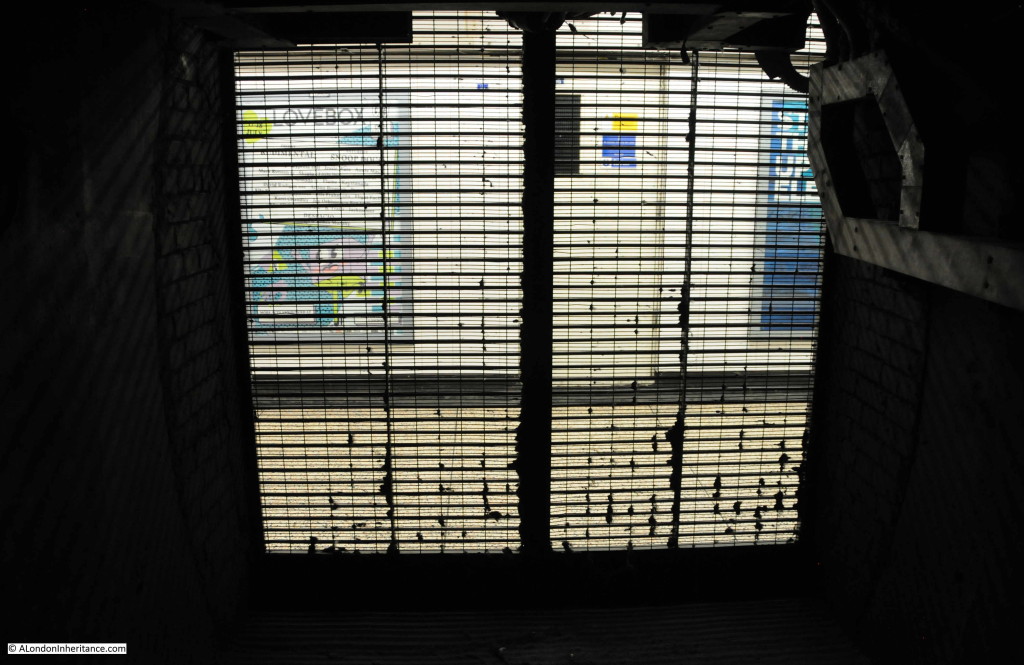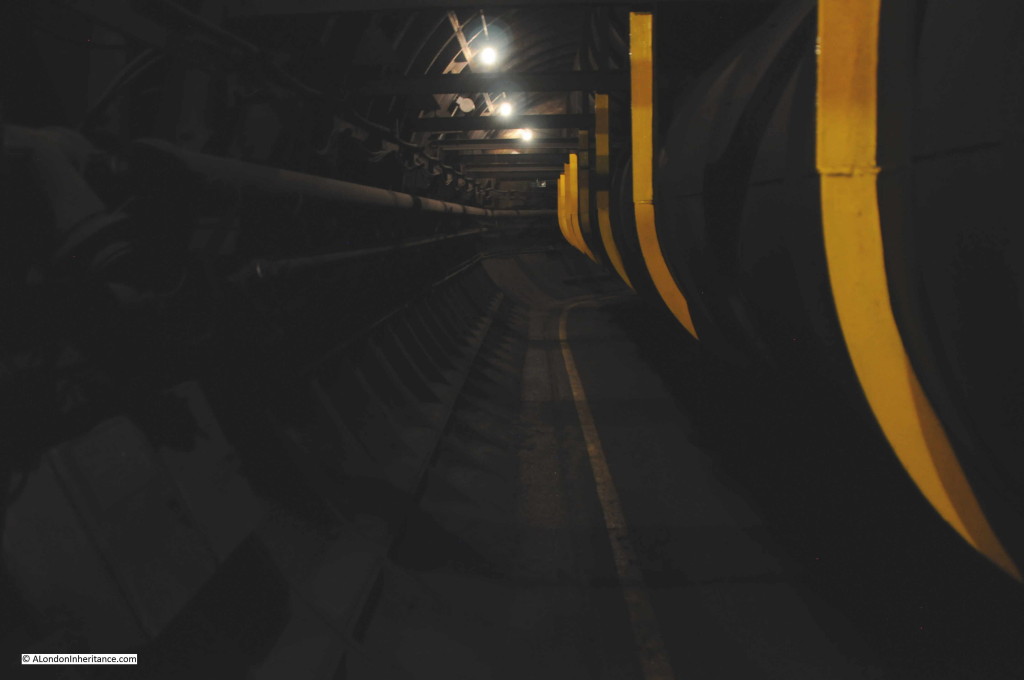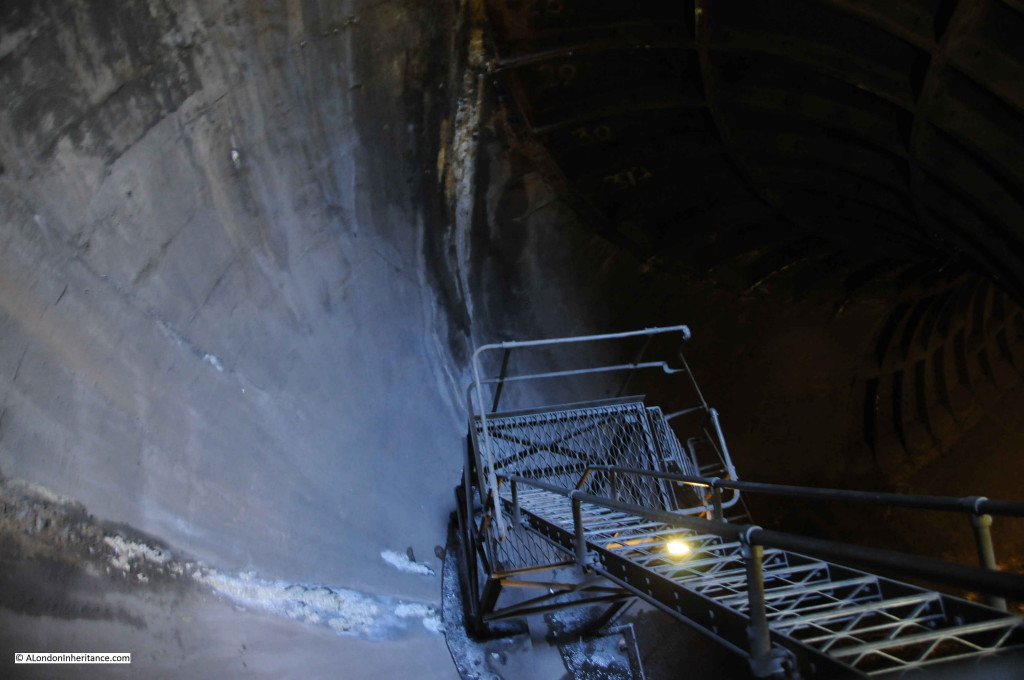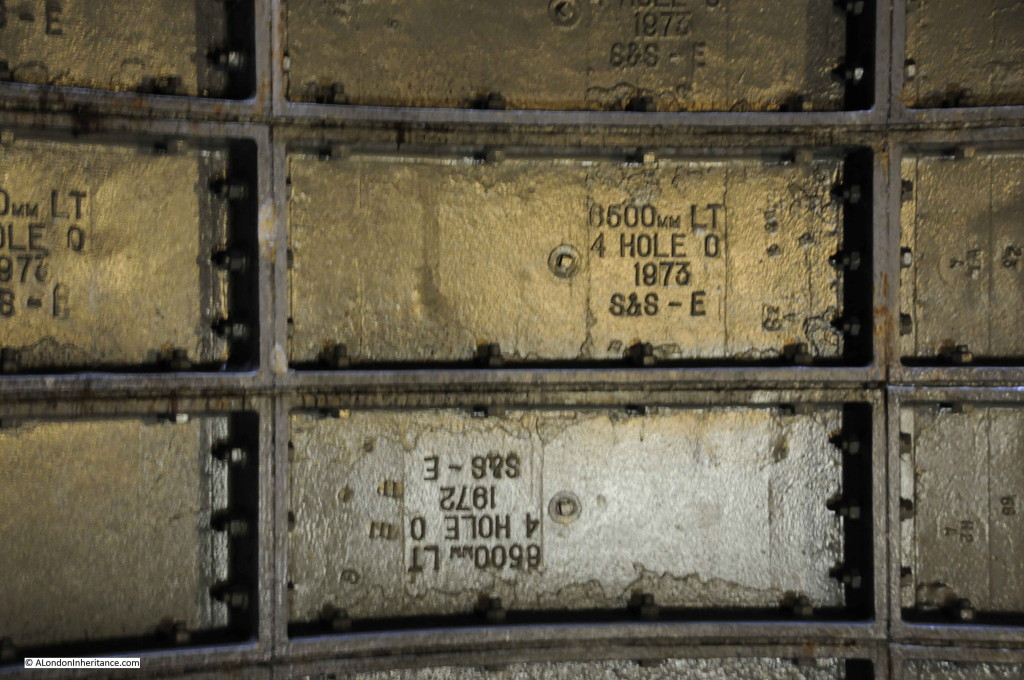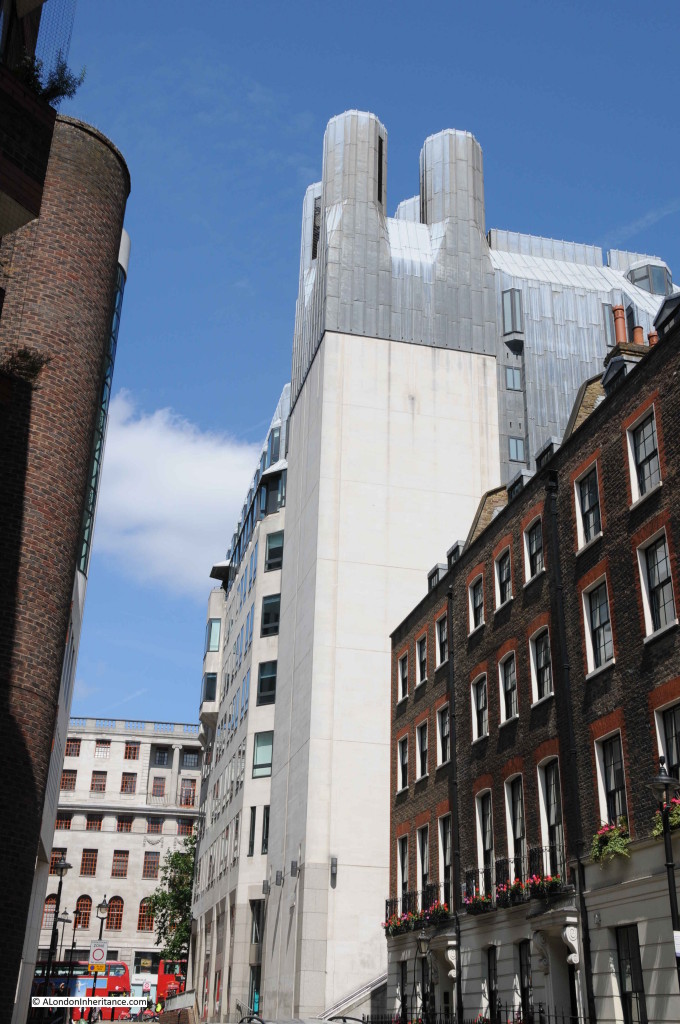Charing Cross is a busy underground station on the Northern and Bakerloo lines. Over recent weeks, the excellent London Transport Museum have been running one of their occasional tours of the transport infrastructure below ground and last Saturday I took their Charing Cross Station tour to see the original Jubilee Line platforms along with the tunnels used for station construction and those providing today’s ventilation of the system.
There is so much infrastructure beneath the streets of London and it is fascinating to understand how this supports the London of today, as well as how the development of London is reflected by what is beneath.
The first part of the tour covered the now disused Jubilee Line platforms.
In 1971 construction started on a new underground line which was to have been called the Fleet Line, initially running from Stanmore to Charing Cross, the Fleet name was used due to the expected extension of the line from Charing Cross, along the route of Fleet Street through to stations in the City, including Fenchurch Street and Canon Street.
The planned name was changed to Jubilee Line to mark Queen Elizabeth II’s Silver Jubilee in 1977. The change of name was one of the pledges made by the Conservatives as part of their 1977 GLC election manifesto.
The new Jubilee Line, running from Stanmore to Charing Cross opened in 1979.
Plans for major redevelopment and building across the old London docklands resulted in a change of route for the Jubilee Line extension. The significant developments at Canary Wharf and surroundings and the large number of people who would need to travel out to these areas required additional transport capacity as the area was not served by the underground railway.
The planned Jubilee Line extension was therefore re-routed from Green Park station to take a new route to Westminster, then along the south of the river, up to Canary Wharf and finally Stratford.
This left Charing Cross at the end of a short spur from Green Park, now bypassed by the new extension of the Jubilee Line, and as a result, the station closed in 1999, with the Jubilee Line then taking the route we see today.
The platforms and their associated access tunnels, escalators etc. are still in excellent condition and are used for occasional operational purposes as well as a film set with several recent films including Skyfall and Paddington being filmed here, along with episodes of the TV series Spooks.
One of the old Jubilee Line platforms at Charing Cross. Still in excellent condition and with live tracks allowing Jubilee Line trains to be routed in from Green Park if needed:
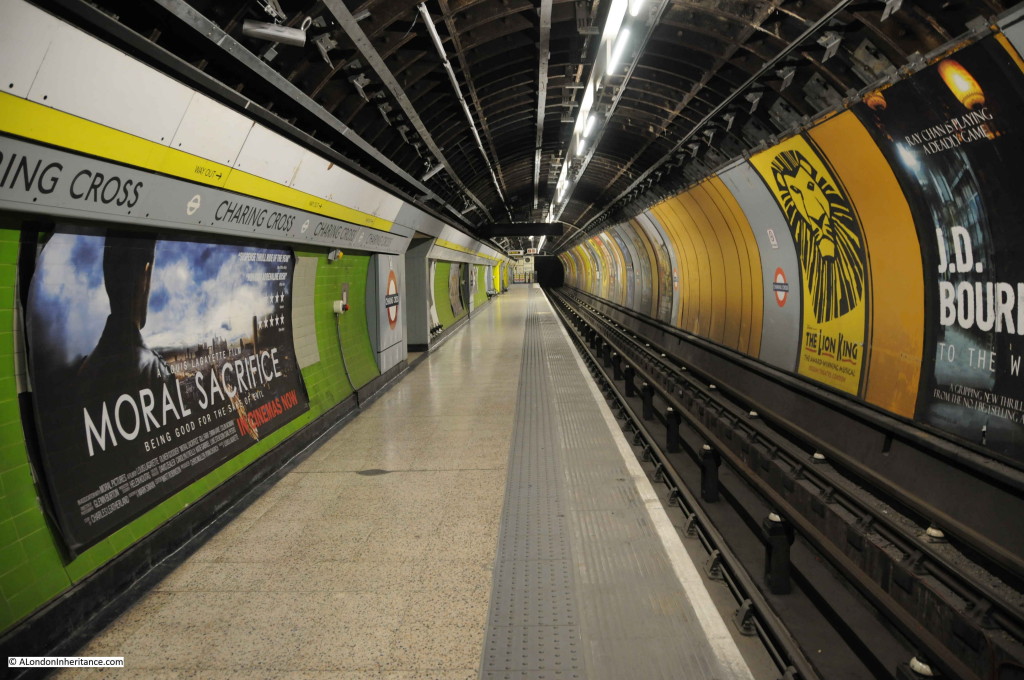 As well as running on to join the main Jubilee Line outside off Green Park, the overrun of the old Jubilee Line heads towards Aldwych, nearly reaching the old Piccadilly Line station at Aldwych (now closed, which I visited here). There is sufficient length in the overrun to park two trains and the tunnel stops about 100m short of Aldwych.
As well as running on to join the main Jubilee Line outside off Green Park, the overrun of the old Jubilee Line heads towards Aldwych, nearly reaching the old Piccadilly Line station at Aldwych (now closed, which I visited here). There is sufficient length in the overrun to park two trains and the tunnel stops about 100m short of Aldwych.
The above photo is looking in the direction of the run off tunnel and Aldwych.
The opposite end of the platform looking towards Green Park:
Sign showing the original routing of the Jubilee Line, when it ran from Green Park to terminate at Charing Cross:
 The top of the escalators and stairs leading down to the platforms. These were used in one of the underground chase scenes in Skyfall:
The top of the escalators and stairs leading down to the platforms. These were used in one of the underground chase scenes in Skyfall:
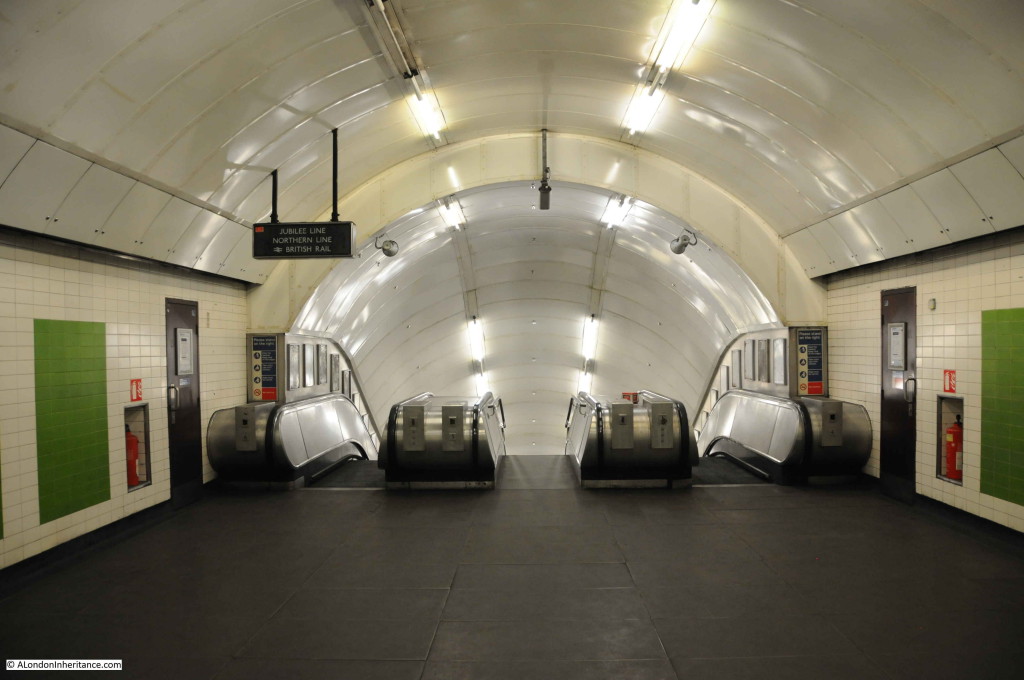 The next part of the tour were the tunnels used as part of the construction of the original Jubilee Line and station at Charing Cross. These are entered from the working passageways and it is always fascinating to see what is behind the many doors along passenger walkways.
The next part of the tour were the tunnels used as part of the construction of the original Jubilee Line and station at Charing Cross. These are entered from the working passageways and it is always fascinating to see what is behind the many doors along passenger walkways.
Inside the start of one of the construction tunnels looking back at the doors to the passenger walkway:
 This tunnel was used to remove the spoil dug from the station and Jubilee Line. The tunnel runs from Charing Cross station, then under Trafalgar Square passing under the fountain on the right as you look towards the National Portrait Gallery. It now terminates roughly under the 4th plinth at the far corner of Trafalgar Square from Charing Cross. It did run further to where the Sainsbury Wing of the National Gallery is now located. It was here that a shaft to the surface allowed the construction spoil to be removed.
This tunnel was used to remove the spoil dug from the station and Jubilee Line. The tunnel runs from Charing Cross station, then under Trafalgar Square passing under the fountain on the right as you look towards the National Portrait Gallery. It now terminates roughly under the 4th plinth at the far corner of Trafalgar Square from Charing Cross. It did run further to where the Sainsbury Wing of the National Gallery is now located. It was here that a shaft to the surface allowed the construction spoil to be removed.
Looking down the tunnel, running under Trafalgar Square:
At the far end of the tunnel, roughly under the area of the 4th plinth. The end is now blocked, but this ran onto the shaft that allowed spoil to be removed to the surface.
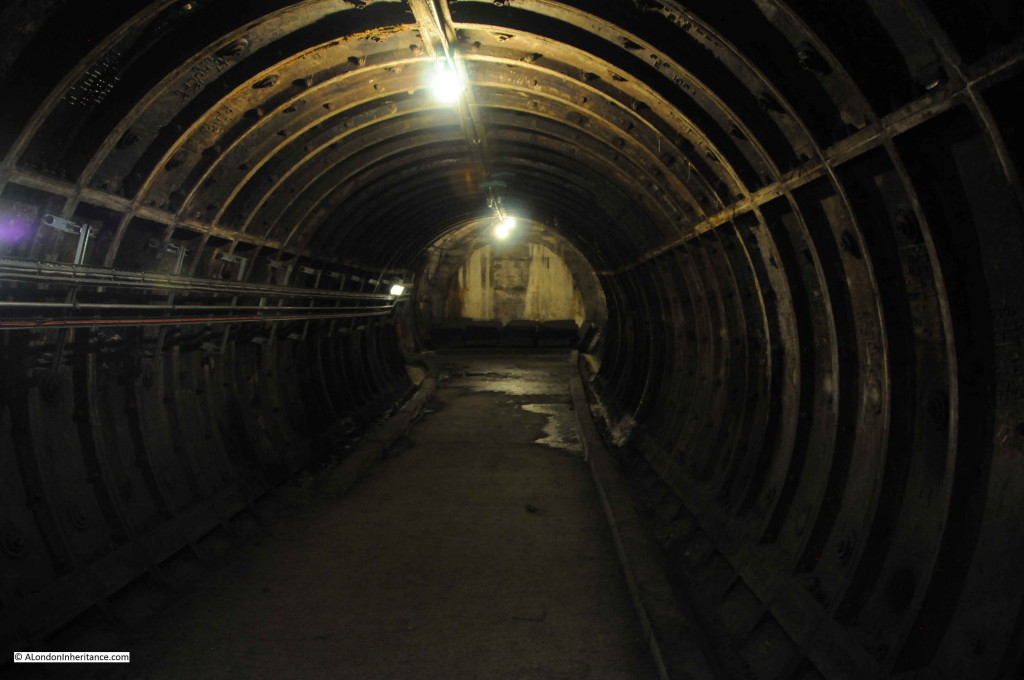 At the very end of the tunnel:
At the very end of the tunnel:
A small side tunnel at the end of the construction tunnel:
 Looking back down the construction tunnel:
Looking back down the construction tunnel:
Back near the top of the construction tunnel showing the detail of the construction of the tunnel walls.
Each of the segments forming the tunnel surround are dated with their year of manufacture:
 The next set of tunnels were those used for the ventilation of the working tunnels. These carried large ventilation pipes and other equipment so hard hats were needed:
The next set of tunnels were those used for the ventilation of the working tunnels. These carried large ventilation pipes and other equipment so hard hats were needed:
Descending down to where the air vents above the working platforms are located:
A strange experience to be standing on the grills above working platforms with trains arriving and departing beneath:
Train at the platform from above:
The other side of the grill, looking through to the passenger walkways from the ventilation tunnels:
Walking along the ventilation tunnels. Large ventilation pipes running the length of the tunnel:
At the end of the tunnel is the shaft that rises up above surface level. This is looking down at the base of the shaft. A further tunnel branching off the base of the shaft to the lower right can just be seen:
Looking up the shaft:
Again, the segments supporting the sides of the shaft are dated with their year of manufacture:
This is what the shaft looks like from outside. In a side street adjacent to Charing Cross Station these look integral to the office block on the site but are really part of the infrastructure supporting the underground:
This was a fascinating tour to see part of the history of the London Underground and some of the infrastructure that has supported past construction and current operation.
My thanks to the London Transport Museum and the staff on the day for the tour.

